The Shining: 10 Big Differences Between The Book And Movie

The movie The Shining, directed by the great Stanley Kubrick and starring the terrifying Jack Nicholson, is VERY different from the Stephen King-penned book from which it is adapted. Many of the most iconic things in the movie either don’t appear in the book or present themselves in a completely different way from the book.
It’s not unusual for movies to be very different from the books they are adapted from. There can be a myriad of reasons why. Sometimes scenes in books are impossible to film, while other times it’s due to time constraints, as books are usually much longer than movies. Sometimes it’s simply a director’s choice.
The Shining is a great example of Stanley Kubrick twisting Stephen King’s story to fit his vision of a man going crazy in an isolated mountain hotel in the dead of winter. He made the changes for a lot of reasons, but mostly, it seems, he made the changes so that the basic story was molded into his unique vision, as only Kubrick could have done.
There are some very small changes that do little to affect the overall plot, like changing the main character’s name from John to Jack, to some very major changes that completely change the events and why they happen. More famously, the supernatural room in the book is room 217, but the Stanley Hotel, where the film was shot, asked that they use a non-existent room number so that future customers would be freaked out if they were assigned to 217. The movie uses 237 instead.
Those kinds of changes don’t affect the story, but there are some major changes that definitely change the story a lot. are some of the biggest differences between Stanley Kubrick The Shining film and Stephen King’s The Shining novel.

The Very Nature Of “The Haunted” Hotel Are Very Different
In the book The Shining, it’s very clear, in true Stephen King fashion, that the Overlook Hotel is haunted. There are ghosts, things that going bump in the night and even the topiaries in the garden come alive in the book. The supernatural is very apparent and very real in this version of the story. It is these ghosts and ghouls that drive John mad.
In the movie, the nature of the Jack’s decent into madness is much more ambiguous and seems to take place all in his mind. Rather than supernatural forces making him nuts, it’s his own mental health that falls apart without the influence of ghosts or spirits. Rather than actual ghosts, the movie presents the supernatural as all in the character’s head, due to the isolation and writers block he experiences.
CINEMABLEND NEWSLETTER
Your Daily Blend of Entertainment News
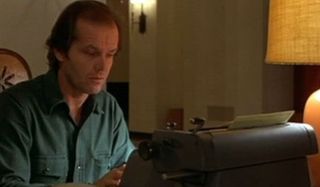
The Main Character’s Writing Projects Are Different
In both the book and the movie, the main character is a writer struggling with writer’s block. That is pretty much where the similarities end, in that respect.
In the book, John is a playwright who abandons his original play and begins writing a story based on the history of the spooky hotel, The Overlook, that the family is care-taking for the winter.
In Stanley Kubrick’s movie The Shining, whatever Jack’s intending to write is never really defined. It’s discovered later in the movie what he’s actually been writing and we’ll get to that later.
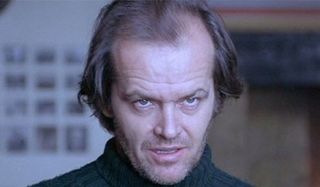
John’s Motivation In The Book For His Book Is Different
Again, in the movie, it’s unclear what Jack is trying to write, other than it being a novel of some sort. In the book, John’s motivation for writing a book based on The Overlook comes from a scrapbook that he finds. The impact of the scrapbook on John’s psyche is a major subplot of the book. The ghosts in the hotel and in the scrapbook are the ones driving him mad, but he can’t avoid them; they inundate him completely.
In the movie, while the iconic picture from the 1920s is a major reveal, the rest of the scrapbook is essentially left out of the plot. Since the movie is more about Jack losing his mind from the inside, a motivator like the scrapbook is less important.
Stanley Kubrick’s movie flips what kind man that the main character is. Instead of a sane man pushed into insanity as Stephen King wrote him, Jack Nicholson’s character is already likely insane and he is trying desperately to stay sane while locked in the hotel for the winter.
This difference, while it seems subtle, actually changes the whole nature of the plot from a supernatural horror story to a psychological horror story, and both ways are effective in different ways. It certainly helps that Jack Nicholson pulls off the character’s motivation incredibly well in the film.
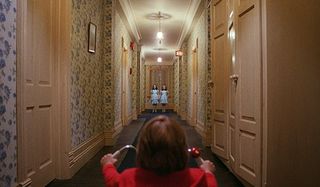
The Famous Twins Are Not In The Book
A number of the most iconic scenes from The Shining do not appear in the book. The chances are that when you hear “The Shining,” the first thing that pops into your head the vision of the twin girls in the hallway as Danny rides around on his tricycle. It’s become a classic scene that has been satirized and parodied many, many times in the years since. But it doesn’t appear in the book. The Grady family murders are discussed in the book, of course, but the girls aren't twins and they aren't seen by Danny in a vision as they are in the movie.
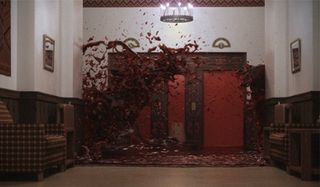
The Bleeding Elevator Is Not In The Book
If it’s not the twins that first pop into your head when you think of The Shining, it’s probably the elevator scene when the blood pours out and splashes around the hallway like a tidal wave. Like the twins, it’s become an iconic moment in cinema history. It also was a scene created by the brilliance of Stanley Kubrick, not Stephen King. It’s a scene that works wonderfully on film, but probably wouldn’t have had the same visceral effect had it been written.
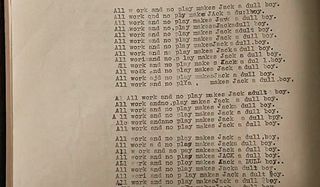
The Famous “All Work And No Play Makes Jack A Dull Boy” Is Not In The Book
The scene when Jack’s wife Wendy discovers what Jack has been writing the whole time is a pivotal and shocking moment in the movie. Like so many other moments, it was made up for the movie.
As mentioned above, in the book, Jack is writing a story based on The Overlook, while in the movie, he never cures his writer’s block and it’s a key component in his psychosis.
The moment when Wendy sees the famous lines “All Work And No Play Makes Jack A Dull Boy” repeated thousands of times is a very direct look into Jack’s psyche and one more sign that he has completely lost his mind.

The Hedge Maze Is Not In The Book
The terrifying conclusion of The Shining movie takes place in a hedge maze at The Overlook as Jack chases Danny with an axe in a psychotic rage. This maze isn’t in the book.
The maze in movie replaces the garden in the book, which is made up of varies plants and topiaries that animate and come to life, so to speak, terrifying John and pushing him closer to the edge. Without the maze, the ending of the book is very different from the movie.

“Here’s Johnny!” Isn’t In The Book
In a movie chock full of iconic moments, none are more so than the scene when Jack Nicholson breaks through the bathroom door with an axe and says “Here’s Johnny!” like Ed McMahon on the old Tonight Show With Johnny Carson.
The scene where John chases Wendy into the bathroom is in the book, but he’s not carrying an axe, but rather a croquet mallet, and he never says “Here’s Johnny!” According to lore, Jack Nicholson made the line up on the spot, and for that, movie goers should be forever grateful.

The Main Character’s Deaths Are Completely Different
Very famously in the movie of The Shining, Jack freezes to death after being unable to catch Danny in the Maze. The iconic shot of a frozen Jack Nicholson has become one of the most enduring (and memed) images in cinema history.
In the book, John doesn’t freeze to death. Instead, he is lured into the boiler room of The Overlook and blown up. So, it’s pretty much the opposite way to die from the movie, but both ways work very effectively given their mediums especially as part of the underlying motivations of the main character.

Wendy Is Completely Different In The Novel
Not only is Wendy completely different looking in the novel, her personality is different also. In the book, Wendy is described as blonde, while Wendy, played by Shelley Duvall in the movie, is most definitely not blonde. She is also described as having movie star-quality beauty, and Shelley Duvall plays the role as less of a golden girl.
More importantly, in the book The Shining, Wendy has a much stronger and more independent personality. She stands up to John in much firmer and stronger ways than the Wendy in the movie ever does. In the movie, Wendy is meeker and much more under the influence of Jack’s more violent tendencies.
There are other slight differences in The Shining, like how Danny interacts with his imaginary friend Tony and how much “Shine” Danny has or how he uses in the novel. “REDRUM” also appears in the novel very early on in Danny’s head, far early than it appears in the movie. These are subtler changes that Stanley Kubrick made were effective because of that one important difference that changed everything, and that is Jack/John’s personality and the nature of his insanity.
Stephen King has been famously critical of Stanley Kubrick’s interpretation of his novel, and it’s easy to see why. Kubrick’s changes completely alter the story that King told. But for fans of the movie, it doesn’t matter because what Kubrick created is a masterpiece of horror that reinvented what a horror movie can be.
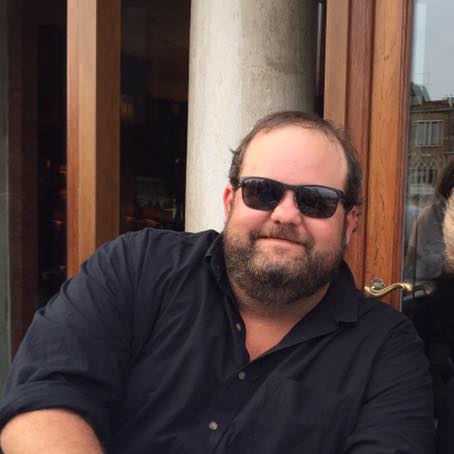
Hugh Scott is the Syndication Editor for CinemaBlend. Before CinemaBlend, he was the managing editor for Suggest.com and Gossipcop.com, covering celebrity news and debunking false gossip. He has been in the publishing industry for almost two decades, covering pop culture – movies and TV shows, especially – with a keen interest and love for Gen X culture, the older influences on it, and what it has since inspired. He graduated from Boston University with a degree in Political Science but cured himself of the desire to be a politician almost immediately after graduation.
Most Popular






